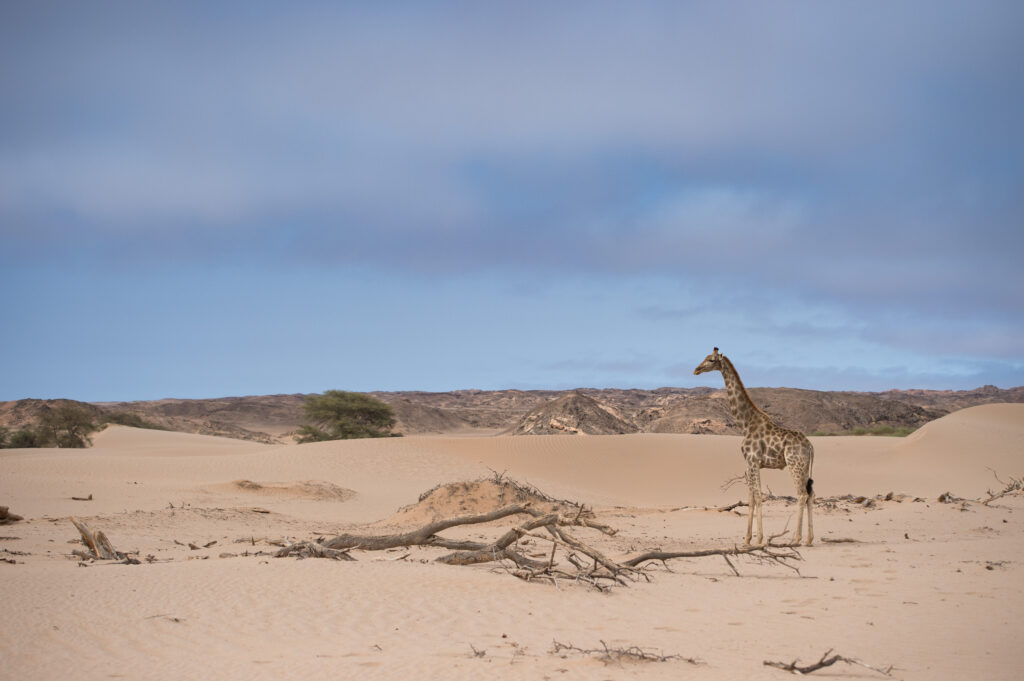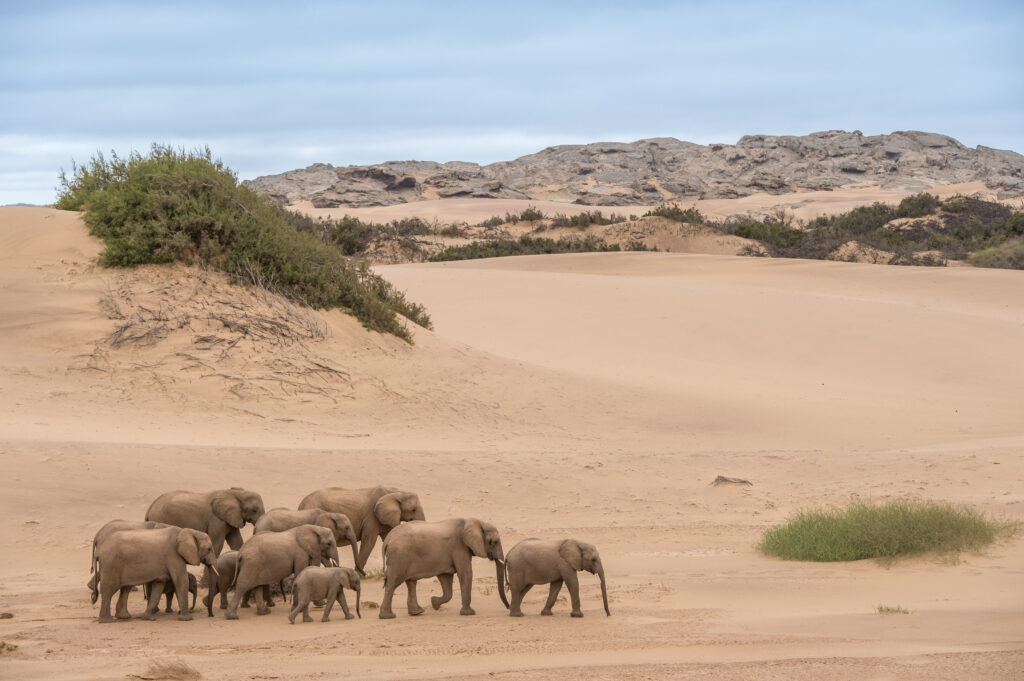How do wild animals survive in deserts?
Sara • 10/02/2024
SHARE
Every time we visit Hoanib in Namibia, we marvel at the animals who seem to have adapted to this arid environment with remarkable survival skills intact. This giraffe, for example, has managed to adapt to this arid region by obtaining all the moisture they need from their food.
They can often be seen browsing early in the morning when there is still dew on the leaves, left behind by the fog that rolls through most nights.
“We refer to them as opportunistic drinkers,” explains Julian Fennessy, director, and co-founder of the Giraffe Conservation Foundation at Hoanib Valley Camp. “If water is easily available they will drink, but they don’t actually have to.” Julian’s studies have also found that the giraffes change their diet seasonally in order to extract maximum nutrition and water.

Desert adapted elephants sometimes venture out to the Skeleton Coast, but these species are mostly found in and around the dry riverbeds of Hoanib, like the ones pictured below.
The desert-adapted elephants are anatomically different from their counterparts found elsewhere, with a smaller body mass than other elephants. Their feet are also larger, presumably enabling them to better negotiate sand. Together, these physical adaptations allow the region’s elephants to trek across vast expanses of desert in search of water. They’ve even developed unique behaviours, and have been seen sliding down dunes to reach a pool of water, and digging holes for water to seep up enabling them to drink it.

But why are these animals existing in such a barren world?
The bottom line is that animals haven’t chosen to live here, they’ve either been driven out of their own natural environments and have moved here out of necessity and generations of the same genus has followed. They go where they can find food and survive.

